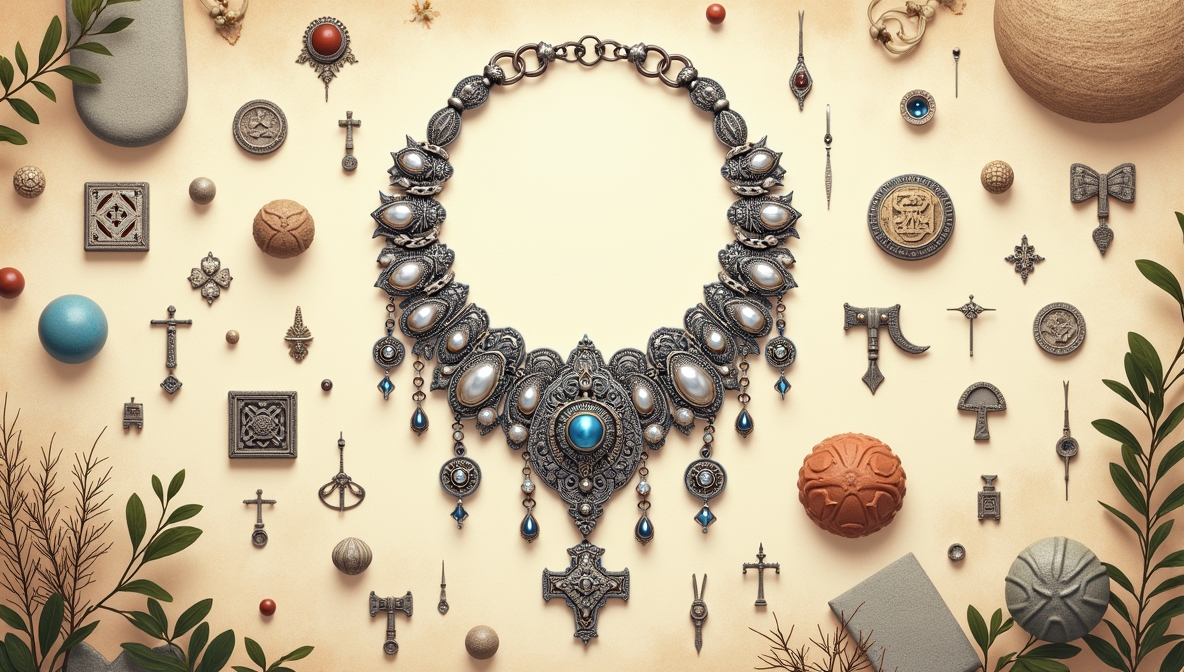Silver has captivated humanity for millennia, not just for its beauty but also for its versatility and symbolism. From ancient civilizations to modern-day fashion, silver jewelry has played a significant role in culture, art, and personal adornment. In this blog, we’ll take a journey through the fascinating history of silver jewelry and explore how AIVA SILVER, India’s premier online store for 925 sterling silver, continues this legacy with its exquisite designs.
Silver Jewelry in Ancient Civilizations
1. Mesopotamia: The Birthplace of Silver Craftsmanship
Silver jewelry dates back to 3000 BCE in Mesopotamia, where it was used for both adornment and trade.
- Key Features: Intricate filigree work and hammered designs.
- Symbolism: Represented wealth and divine favor.
Fun Fact: The oldest known silver jewelry pieces were discovered in the Royal Cemetery of Ur.
2. Ancient Egypt: Silver as a Sacred Metal
In ancient Egypt, silver was rarer than gold and often associated with the moon and the gods.
- Key Features: Beaded necklaces, amulets, and cuff bracelets.
- Symbolism: Linked to protection, purity, and immortality.
Example: The famous Scarab Amulets were often crafted in silver for their protective qualities.
3. Ancient Greece and Rome: Elegance and Status
Silver jewelry became a symbol of status and sophistication in ancient Greece and Rome.
- Key Features: Laurel wreaths, cameos, and coin pendants.
- Symbolism: Represented power, victory, and wealth.
Fun Fact: Roman soldiers often wore silver rings engraved with their family crests.
Silver Jewelry in the Middle Ages
1. Byzantine Empire: Opulence and Religion
The Byzantine Empire saw silver jewelry adorned with religious motifs and gemstones.
- Key Features: Cross pendants, enamel work, and intricate chains.
- Symbolism: Reflected devotion and spiritual connection.
Example: Silver reliquaries were used to hold sacred relics.
2. Medieval Europe: Heraldry and Romance
Silver jewelry in medieval Europe often featured heraldic symbols and romantic themes.
- Key Features: Signet rings, love tokens, and brooches.
- Symbolism: Represented loyalty, love, and family heritage.
Fun Fact: Silver “posy rings” were engraved with poetic messages and given as tokens of affection.
Silver Jewelry in the Renaissance and Baroque Periods
1. Renaissance: Revival of Classical Art
The Renaissance brought a renewed interest in classical art and intricate craftsmanship.
- Key Features: Mythological motifs, gemstone accents, and detailed engravings.
- Symbolism: Celebrated humanism and artistic expression.
Example: Silver pendants featuring Greek gods and goddesses were highly popular.
2. Baroque: Drama and Grandeur
Baroque jewelry was characterized by bold designs and dramatic contrasts.
- Key Features: Large statement pieces, pearl accents, and floral patterns.
- Symbolism: Represented opulence and power.
Fun Fact: Silver was often combined with gold to create striking dual-tone designs.
Silver Jewelry in the 19th and 20th Centuries
1. Victorian Era: Sentimentality and Symbolism
The Victorian era saw silver jewelry filled with hidden meanings and sentimental value.
- Key Features: Lockets, mourning jewelry, and snake motifs.
- Symbolism: Represented love, remembrance, and eternity.
Example: Silver lockets often held portraits or locks of hair from loved ones.
2. Art Nouveau: Nature and Elegance
Art Nouveau jewelry celebrated natural forms and flowing lines.
- Key Features: Floral and insect motifs, enamel work, and asymmetrical designs.
- Symbolism: Reflected harmony with nature and artistic freedom.
Fun Fact: René Lalique, a famous Art Nouveau jeweler, often used silver in his creations.
3. Art Deco: Geometry and Glamour
The Art Deco movement brought sleek, geometric designs to silver jewelry.
- Key Features: Bold lines, abstract patterns, and gemstone accents.
- Symbolism: Represented modernity and sophistication.
Example: Silver cocktail rings and long pendant necklaces were staples of the era.
Silver Jewelry in Modern Times
1. Mid-20th Century: Minimalism and Versatility
Post-World War II, silver jewelry became more accessible and versatile.
- Key Features: Simple chains, hoop earrings, and stackable rings.
- Symbolism: Embraced practicality and everyday elegance.
Fun Fact: Silver became a popular choice for men’s jewelry, including cufflinks and tie pins.
2. Contemporary Fashion: Bold Statements and Sustainability
Today, silver jewelry is a blend of bold designs and eco-conscious practices.
- Key Features: Mixed metals, personalized pieces, and sustainable materials.
- Symbolism: Reflects individuality and environmental awareness.
AIVA SILVER’s Role: Their Eco-Chic Collection uses recycled silver and ethical practices to create modern, sustainable designs.
Silver Jewelry in Indian Culture
1. Ancient India: Spiritual and Ornamental
Silver has been integral to Indian culture for centuries, used in both jewelry and religious artifacts.
- Key Features: Temple jewelry, toe rings, and anklets.
- Symbolism: Associated with purity and prosperity.
Example: Silver anklets, or payals, are a traditional adornment for Indian women.
2. Modern Indian Jewelry: Fusion of Tradition and Trend
Indian designers today blend traditional craftsmanship with contemporary styles.
- Key Features: Filigree work, oxidized silver, and gemstone accents.
- Symbolism: Celebrates cultural heritage and modern aesthetics.
AIVA SILVER’s Contribution: Their Heritage Collection features traditional motifs with a modern twist, perfect for today’s fashion-conscious buyers.
The Legacy of Silver Jewelry: AIVA SILVER’s Role
AIVA SILVER continues the rich legacy of silver jewelry by combining timeless designs with modern craftsmanship. Their 925 sterling silver pieces are a testament to the enduring appeal of silver, offering something for every style and occasion.
Conclusion: A Timeless Treasure
From ancient Mesopotamia to modern-day India, silver jewelry has been a symbol of beauty, status, and cultural identity. Its journey through the ages is a testament to its timeless appeal. With AIVA SILVER, you can own a piece of this rich history, crafted with care and designed for today’s world.
Explore AIVA SILVER’s collections and discover how they honor the past while embracing the future of silver jewelry.
Pro Tip: To preserve your silver jewelry’s beauty, store it in anti-tarnish pouches and clean it regularly with a soft cloth.

